Atomic icebreaker Lenin - almost like a spaceship, only an icebreaker
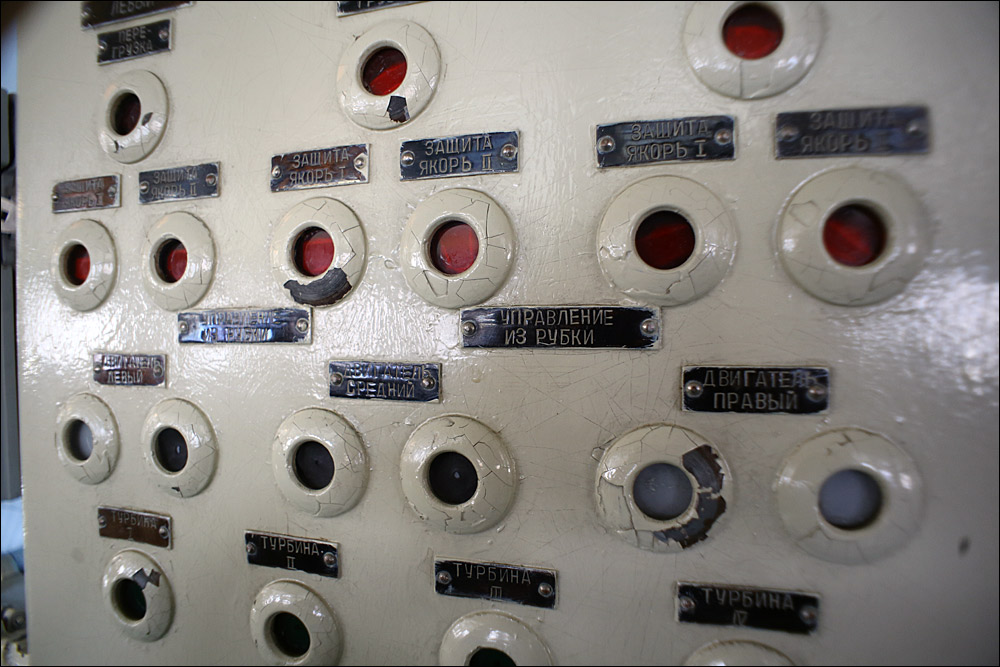
Along with the cosmos in the USSR, we conquered all the other lines. In particular, the Arctic - for it in 1953, it was decided to build the first nuclear-powered icebreaker. This project in terms of importance, scope and lighting almost matched the conquest of space. And here, too, there was a race with the Americans: they finished their aircraft carrier Enterprise 2 years later.
In order to understand why Lenin is so important, you need to start with a short description of the situation.
')
He was really needed. Our economy depended on the transport routes through the Arctic, and normal navigation there is only possible for 3-4 months. Ordinary icebreakers require too much fuel, as a result - they are not very large (that is, they cannot lead large vessels and caravans). Soviet science has proven that a nuclear installation perfectly solves the problem. If you build a power system on it, then you can make an icebreaker big, heavy, wide - and autonomous for 2-3 years. But Kurchatov, with a scientific group, thought up exactly how to do this.
It was a terrific opportunity. Because it was possible to prove to the whole world that our atom is really peaceful. And to show how the peoples of the USSR once again overcame the forces of nature and pushed the boundaries of the accessible to the human.
And then began a very interesting project. I'll go through the main points that really hooked me.
Impression
The first thing that strikes the “ Lenin ” at the visit is its monumentality. It was created to amaze. If nothing extraordinarily large could be sent into space (even astronauts were picked up according to height), here the designers had a huge scope for possible work. See how atypically trimmed:
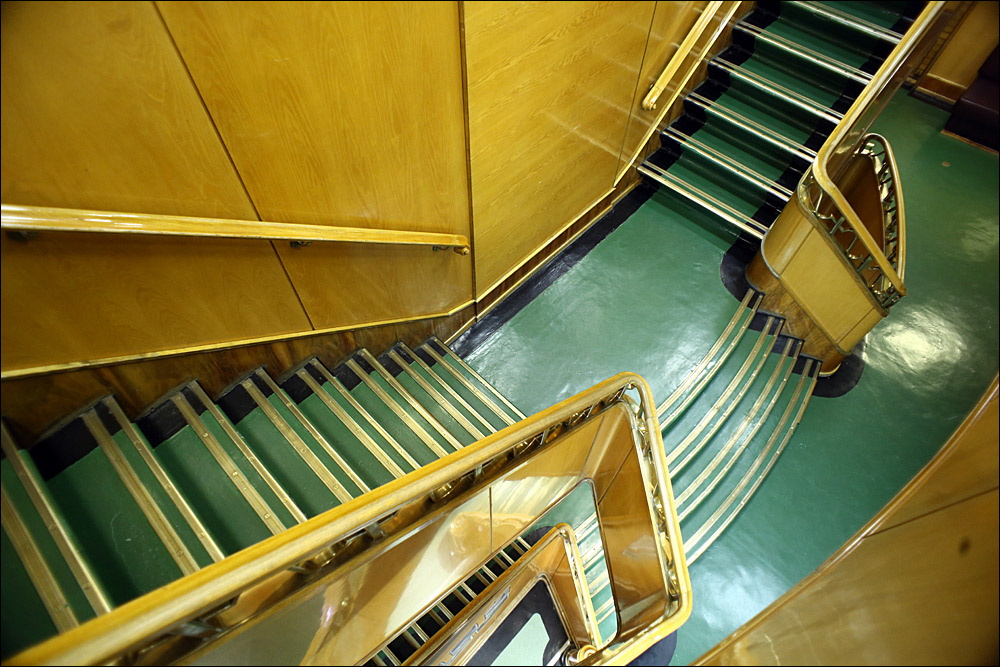
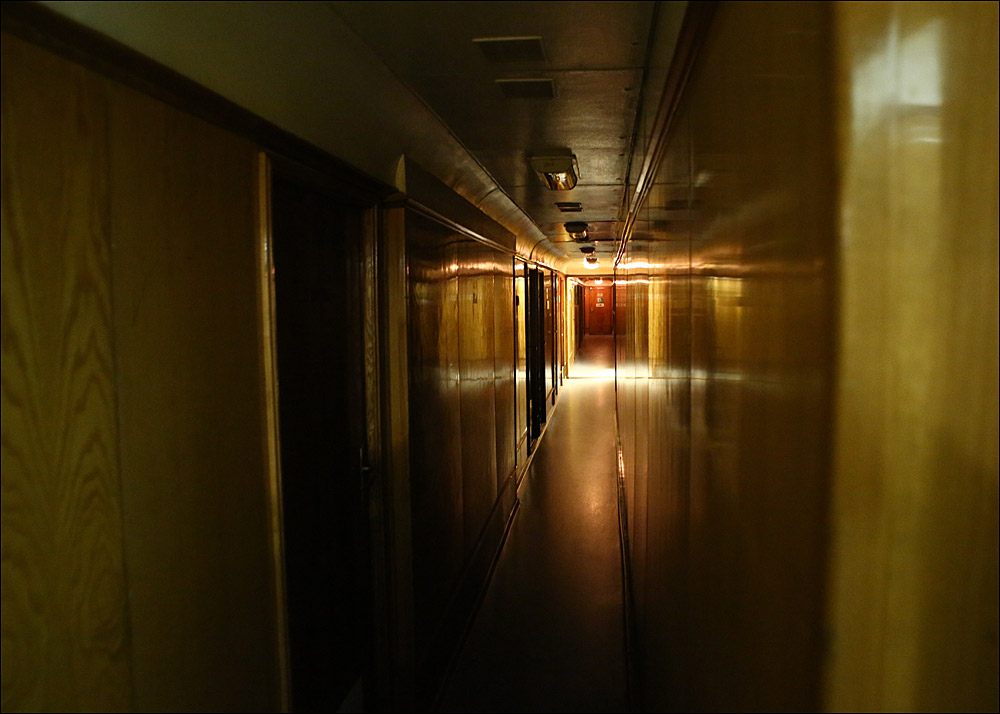
Dear tree. There is no economy here - neither in mass nor in material. Let me remind you that even the first subway cars were already sheathed with plastic on the basis of fabric, like this (I took this in the reconstructed motor car of the A series metro No. 1):
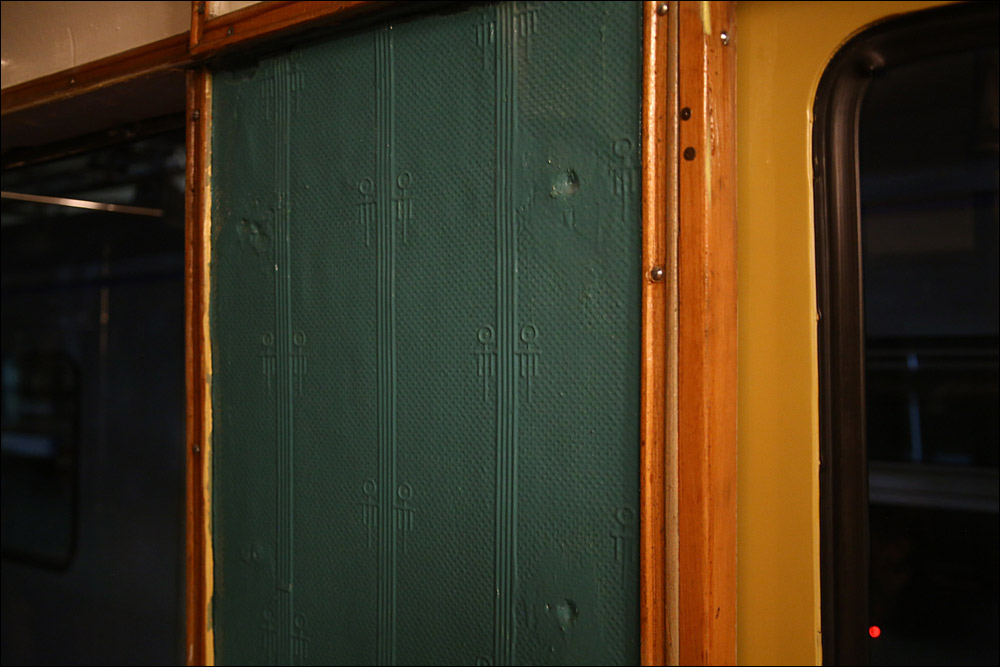
The same plastic was used for steamers to lighten them. "Lenin" did not facilitate. Why? Because firstly, wood trim creates a feeling of warmth and comfort. This is very important for important work, it is very important in long transitions. But more importantly, the icebreaker carried the same function as the first metro stations. He was a symbol of our capabilities. And, therefore, should have hit, and hit immediately, at first glance.
About icebreakers wrote for many years, and there was something to show. And those who visited him - it was something to remember. It is really incredibly spacious.
Naturally, it was equipped with the latest technology, and prepared almost like a spaceship for autonomy. On board was a full-fledged hospital with an incredibly modern technology - an X-ray unit (not all mainland large hospitals had this - and this is yet another proof of the peacefulness of the atom!). On board was a hairdresser, shoemaker’s, tailor’s workshop, lounge, library with reading room, and a smoking salon. The dining room was used as a cinema. A large command center could be deployed in the conference room under the wheelhouse or an official reception could be held.
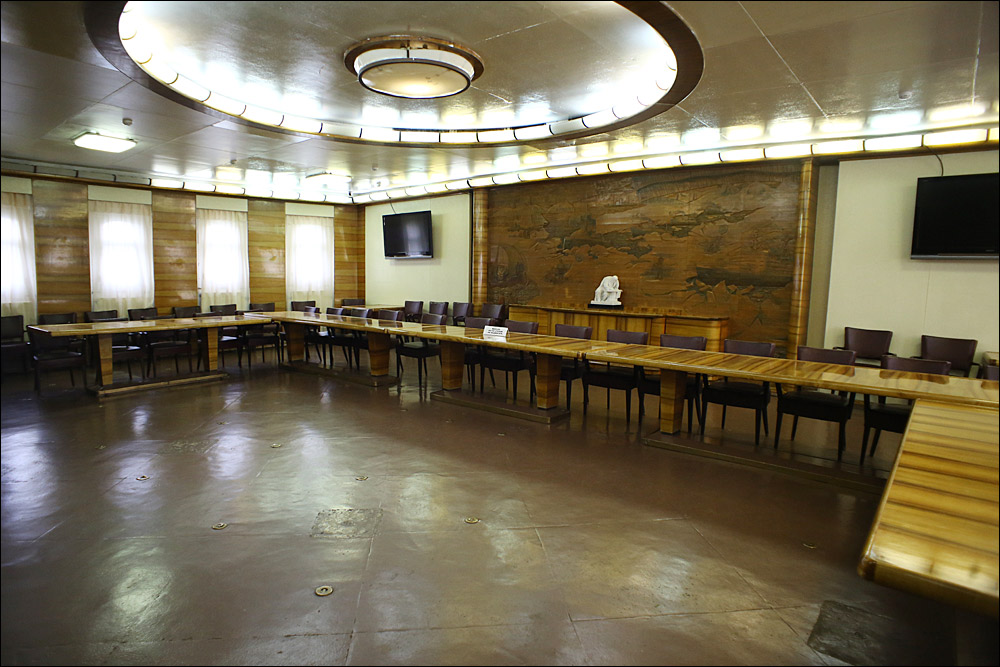
Everything was taken on the road - even chess, in case someone needed to discuss the issue after the game.

Incredible attention was paid to the comfort of the captain and the ship officers. Their cabins were more luxurious than the apartments of many officials. True, less than these apartments - only the captain really was large, and it was used for meetings including (plus a dedicated "kitchen" for tete-a-theta). A lot of furniture under the order was made for the entire nuclear-powered ship - we took care of the ergonomics of everything and everyone.

Automation in the years of construction was not enough. For autonomy 150 crew members were enough (in fact about 230 came on board). The second generation of nuclear-powered ships reduced this number to 100 people. And on the new fourth generation, icebreakers twice as large in size, already 75 people.
Design Solutions
The first big problem was the layout of the engine room. Several hundred enterprises of the USSR worked on the nuclear-powered ship, and specifically in the engine room there were a lot of subcontractors - it was necessary to supply about 6 thousand units of equipment, and often not put at all the way it was done traditionally. Only one change in the technology of soldering pipes for welding has changed a lot in ideas about 75 kilometers of icebreaker pipes.
Therefore, the engine room assembled from wood. Naturally, they made a mock-up of wood and started assembling all the nodes there. It was much faster to remodel the wooden block on the layout than to move the real equipment inside the real case. Later, the same technique was used for repairs - they tried with wooden details, after which they put the main ones, if the operation was properly worked out. Reactor nearby though.
At the time of exit from the dock in St. Petersburg (then - Leningrad), another wildly ridiculous by modern standards problem arose: a draft of 10 meters and a channel depth of 9 meters. It was possible to deepen the channel, it was possible to build supporting pontoons - a lot of things could be. But they calculated the tide and decided to wait for the water to rise by 2.5 meters: this should have happened statistically. Huge money was saved on this country, but could lose time - for a symbol of propaganda it was very important to get on the right date, that is, on November 6, 59th, this is the 42nd anniversary of the Revolution. The party wanted to show the people on their anniversary what was achieved by joint forces. It was impossible to delay the deadline - it was the same deadline in the literal sense, where, if something was wrong,
Month waited for the water. In the end, the author of the idea A. Leibman was called to the “to talk” individuals. He left the building and immediately met an assistant who said that the water would be at night. He returned to the building and reported this to the Specialists. They immediately lit up:
- You see, as soon as we deal with this issue, the water immediately appeared!
The water lasted 2 hours and 20 minutes, the icebreaker spent a little less than 2 hours. By the anniversary we had time to test and pass.
Performing tasks
In fact, no other country needed nuclear ships as much as the USSR. We had a huge sector of the Arctic, and we had to walk through it. "Lenin" solved this problem perfectly. From the 59th year to the 89th - 30 years on the highways of the Arctic. Behind it, nuclear-powered ships were built, and they were combined into one scheme. The result was a year-round caravan navigation. Autonomy - unlimited, it is possible to load fuel every 4-6 years, and considering that about 45 grams of fuel is consumed per day - it is possible (in theory, in practice it never happened), it would be possible to throw a container by plane or helicopter.
Here is the fuel, in fact, the very thin tubes in the section:
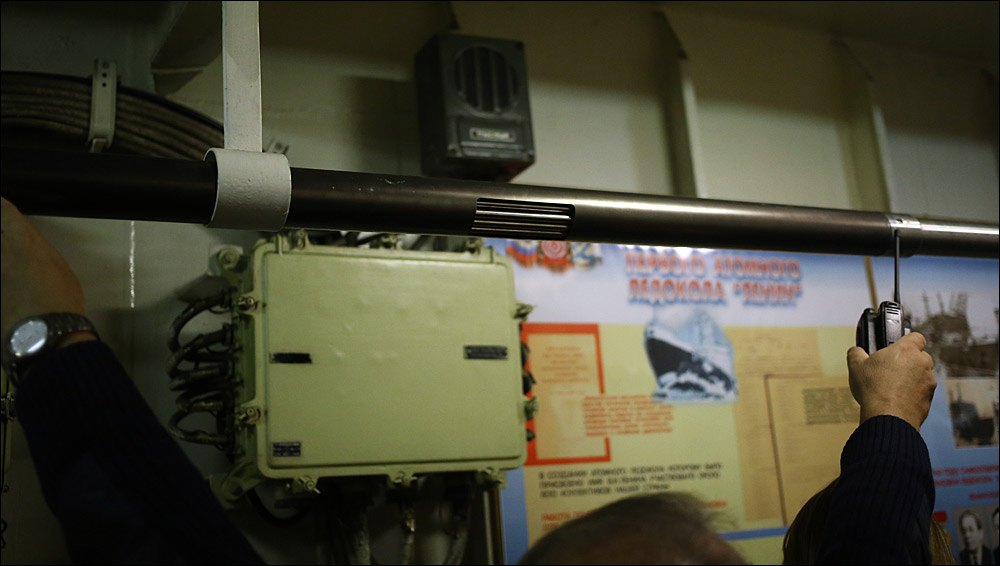
There were just three pieces of reactor installations (after modernization from OK-150 to OK-900 - two blocks), generating steam for 4 power plants - more precisely, 4 turbine generators, supplying 3 electric motors of screws.
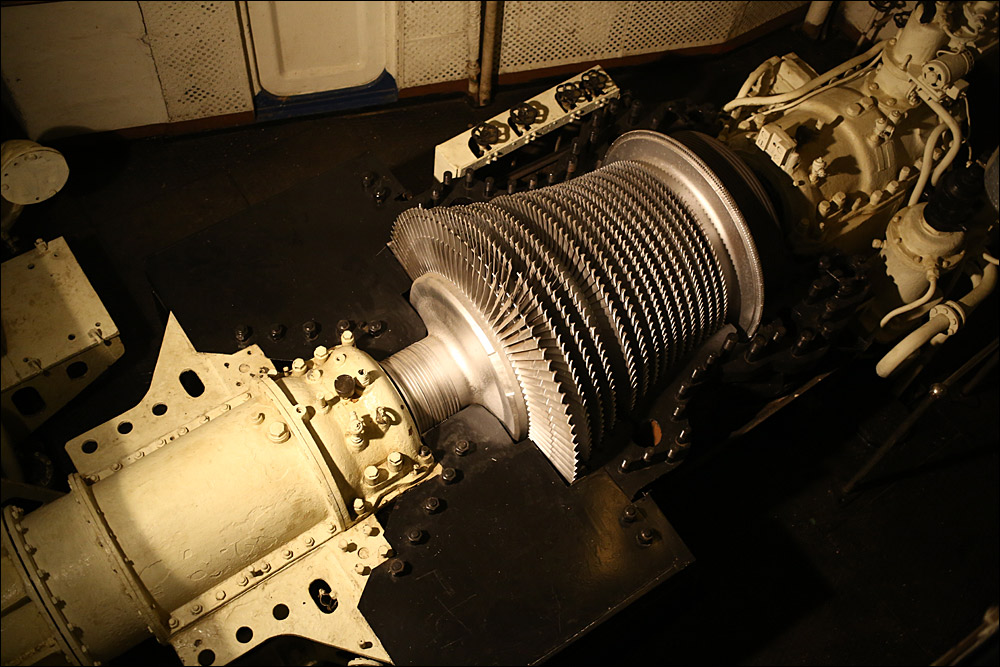
All other nodes were also at least duplicated. In the event of a total failure of the reactor installations, there were diesel stations, plus 500 tons of diesel fuel.
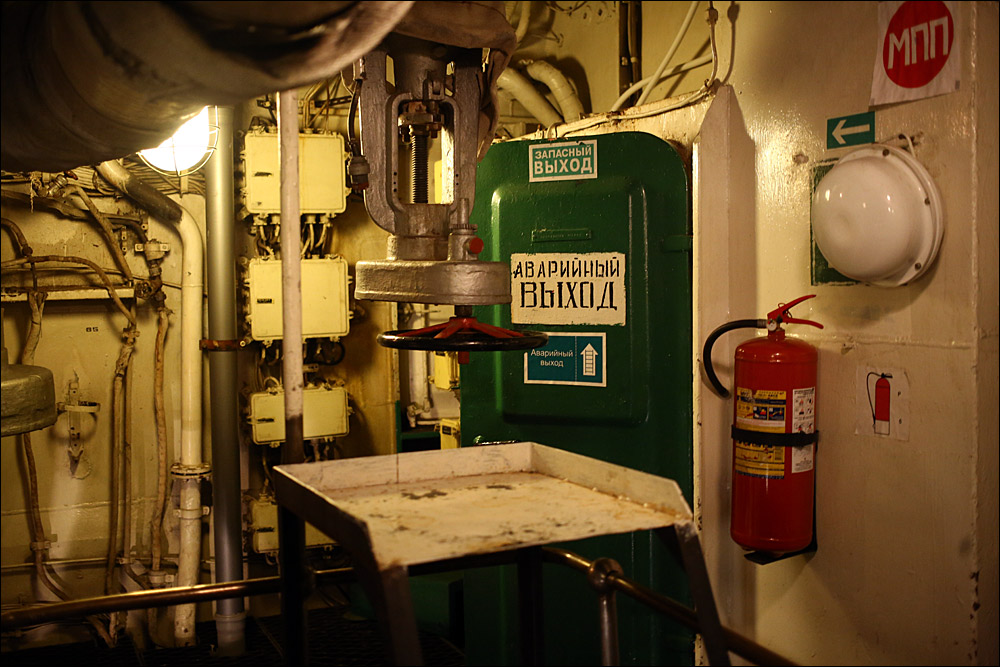
Here is the reactor compartment in a modern form (all - dimensional layouts):
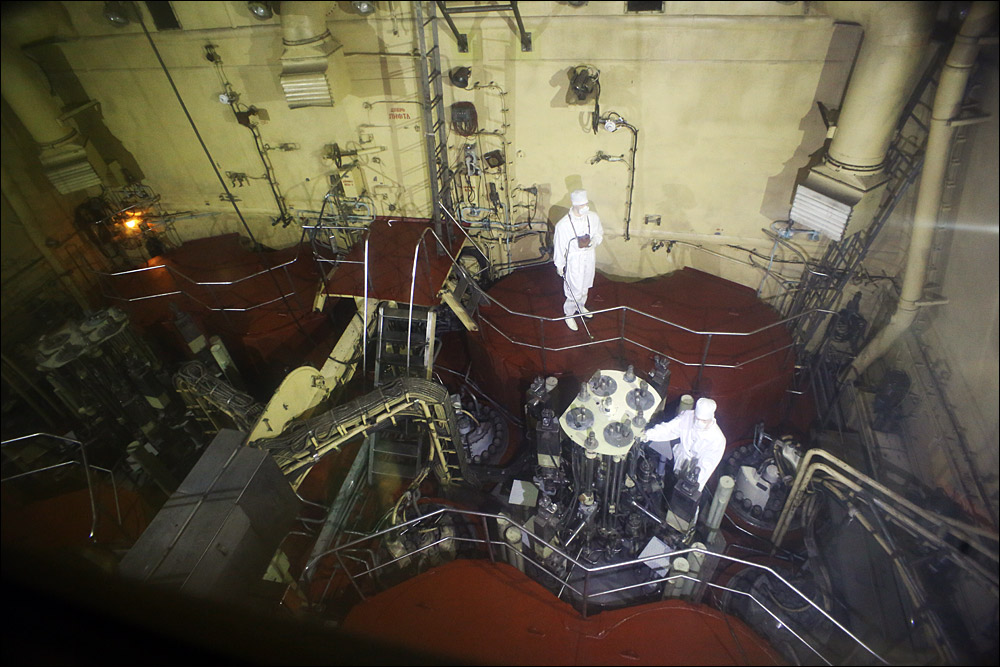
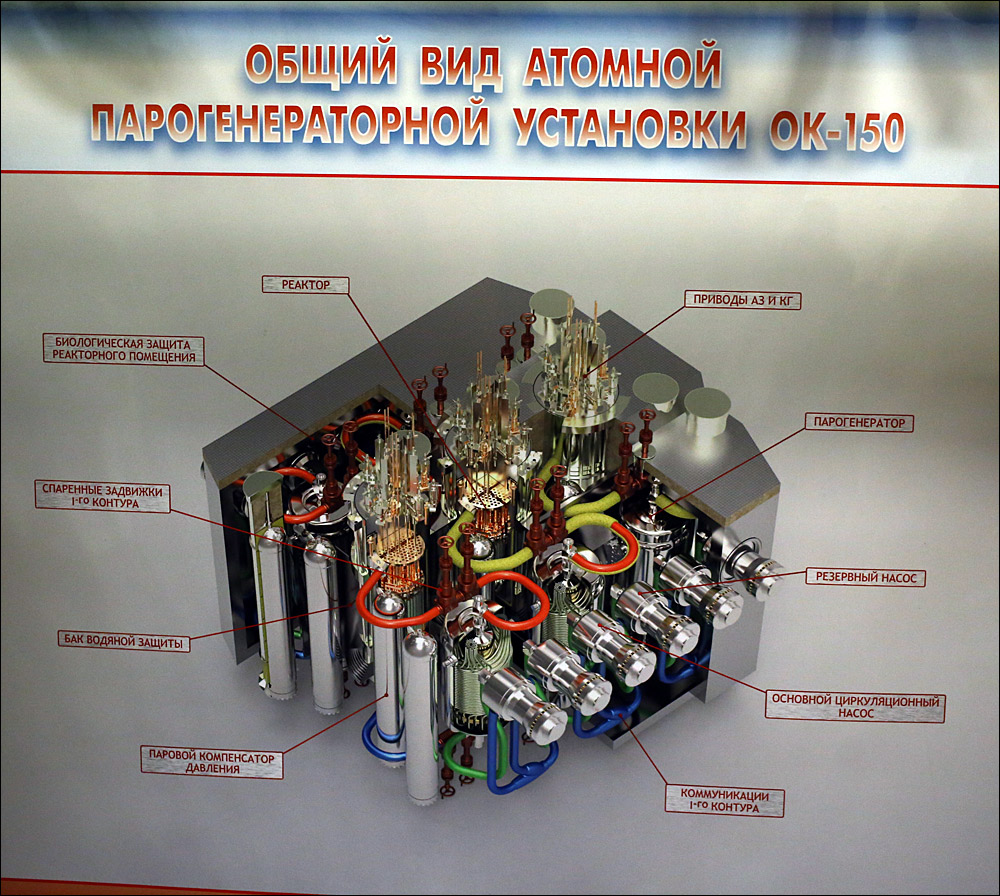
On the icebreaker above the helipad - for ice reconnaissance. The same helicopter from the polar stations could take urgent patients to the Lenin hospital.
In general, here it is necessary to tell a little about how, in fact, it helps to pass the transport through the ice. First and foremost, the icebreaker form of the hull is not suitable for normal navigation: it is not optimal from the point of view of walking in the usual water area. The bow section made it sloping, so that the icebreaker “crawled” onto the ice, and then flared it with its mass:

That is, he does not “butt” the ice, as it seems to many, but breaks it and sends it to the side. The function of the icebreaker is to make a passage in the ice field so that transport ships pass along this aisle behind it. When breaking, it prowls a little, that is, it turns out the passage is slightly wider than the hull, but from the sides - with ice floes, further with ice porridge, and in the middle is clean.
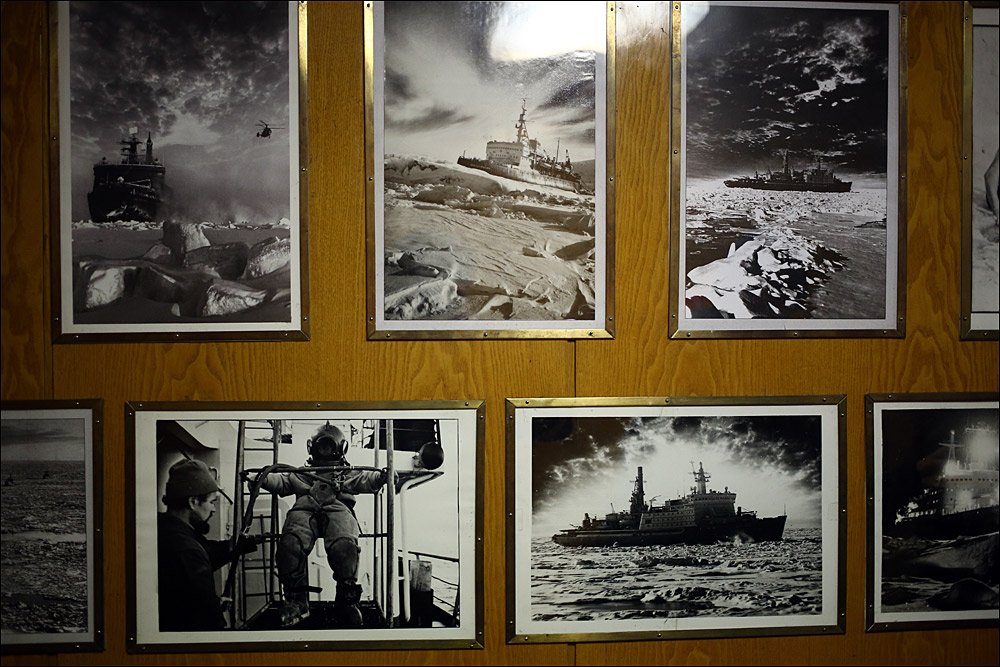
Of course, this is far from always being the case - there is ice of such thickness that the icebreaker simply does not break through. Therefore, it is necessary to assess very well what is ahead - sometimes a caravan needs to be left for ice exploration by the hull, sometimes - to lead with complicated zigzags, sometimes - to return. About 60 basic maneuvers: for example, reconnaissance of the hull, and then carrying out a caravan in tow at one ship through the ice dam. On complex jumpers, you can take the ice is not a continuous course, and the force of overclocking. When you need a wide aisle, for example, with interlocking ice - you can lay the channel "Christmas tree", moving back and forth at the corners. You can turn around and run a second passage next to the first, if there is a danger of compression, or one of the ships is already trapped in ice. Many maneuvers are designed for two icebreakers: there are schemes for parallel movement, forcing the ice together (one presses, the other pushes into the stern), forcing and wiring, and so on.
If you're interested, you can start the journey from the links here .
If the icebreaker is wedged, then it starts to swing. Usually this is done by moving the propellers back and forth, but on the Lenin there are special ballast tanks on the sides into which you can pump water from left to right and vice versa - this makes it possible to rock the icebreaker "from the inside."
Mounting for flooring in case of pitching:

And the dining room chairs are already fixed from the very beginning:
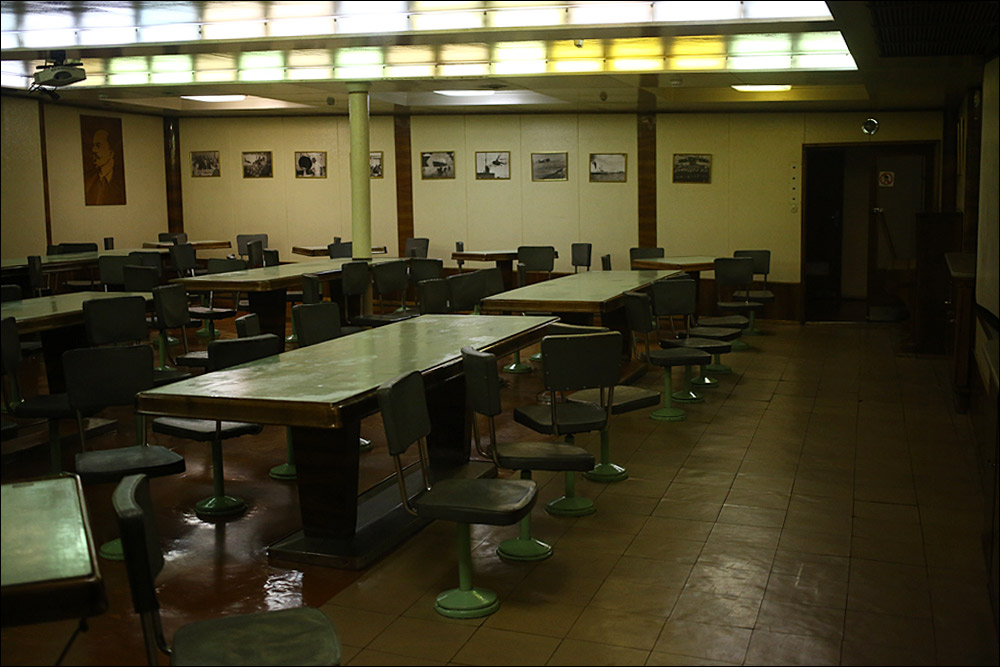
Lozga wrote more about interiors and energy systems right here .
Now pay attention to the control screws (three handles):
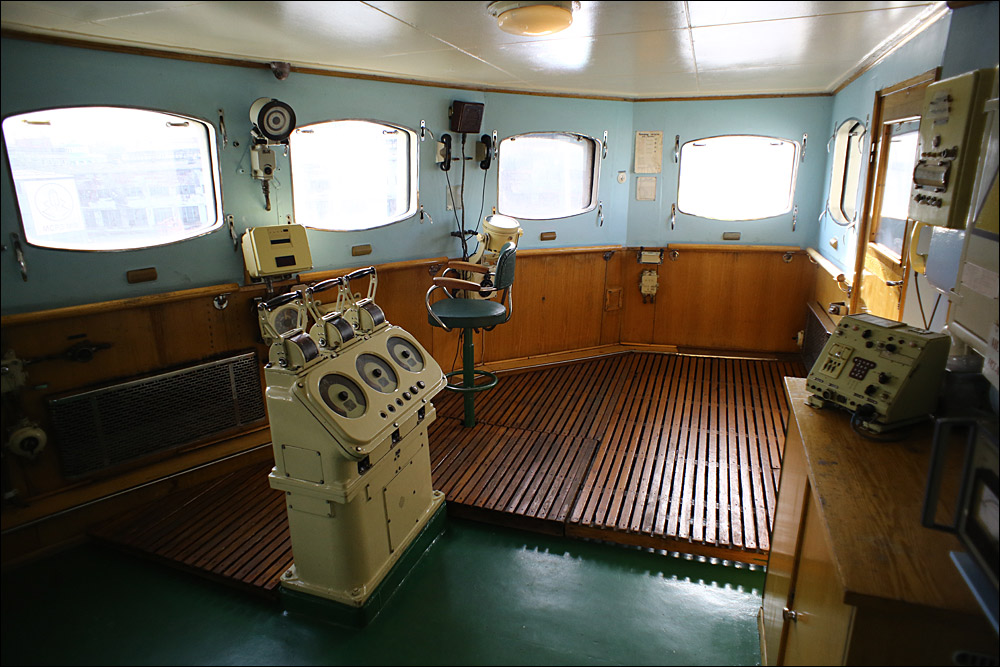
The telegraph for communication with the engine room is found in the wheelhouse three times: on the left, on the right and in the center. Here it is on the other hand:
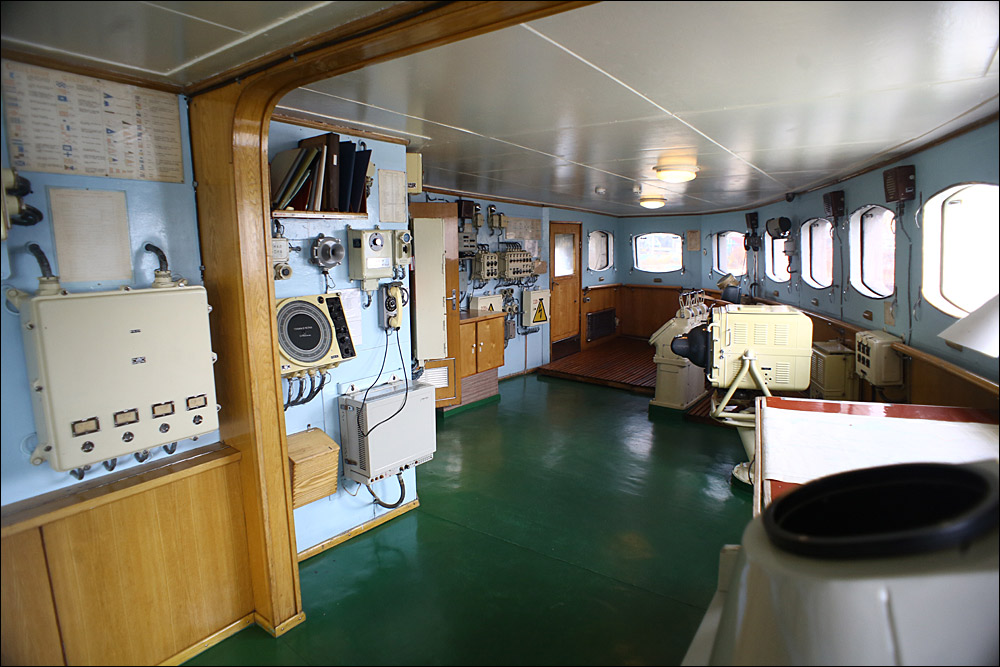
Pay attention to the magazines on the left, they give out a museum reconstruction of the wheelhouse. After sailing around Greenland, for me, this regiment looks like a source of danger - the magazine will definitely fly into my head when I roll. And yes, I clarified that this particular regiment appeared after the transformation of the nuclear-powered ship into a museum, the usual pitching is quite strong.
As you can see, a panoramic view is available in the windows. Therefore, the main control of the maneuver is done from where the person stands, so as not to run and look back.
All devices of the early automatic era:
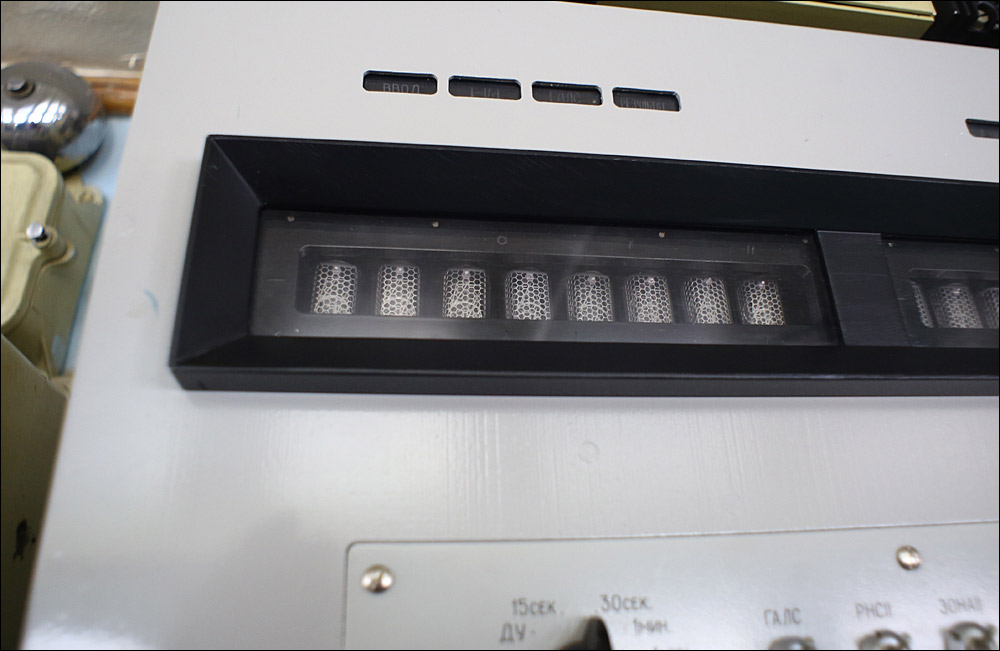
This is the radar screen:
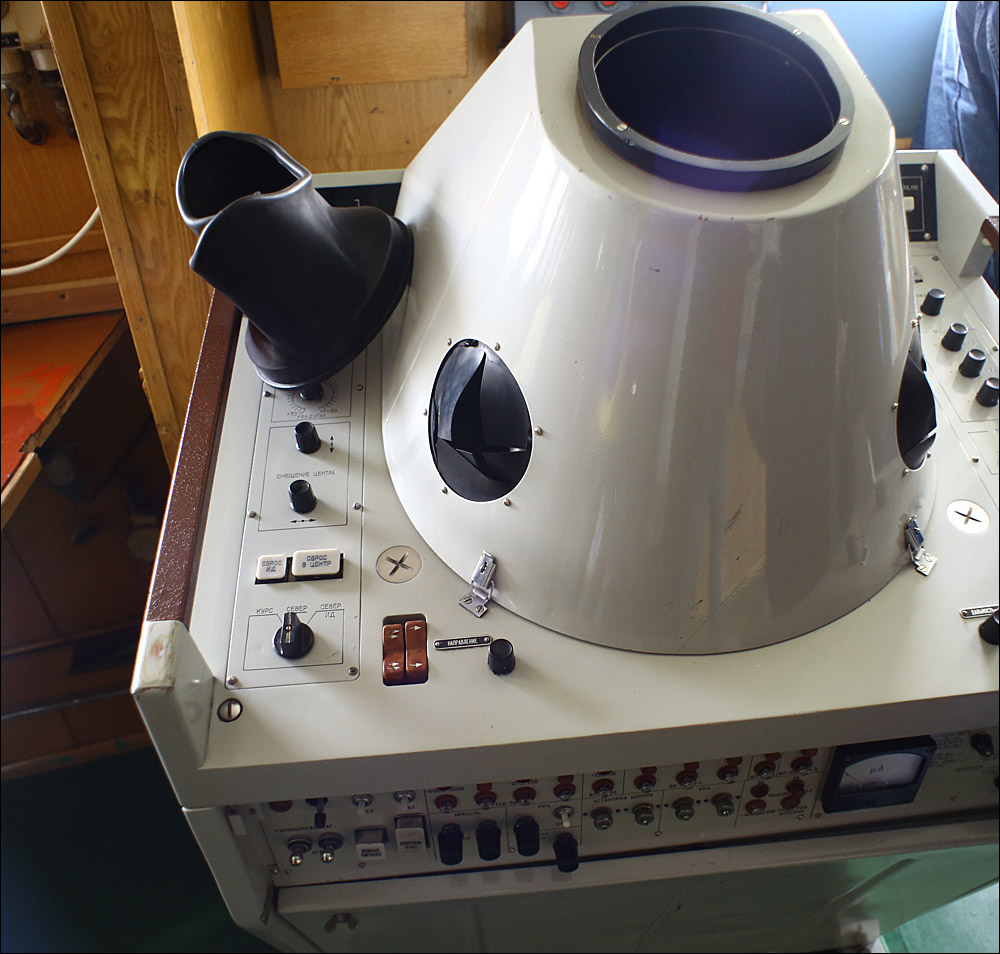
Everything is very clear and unambiguous:
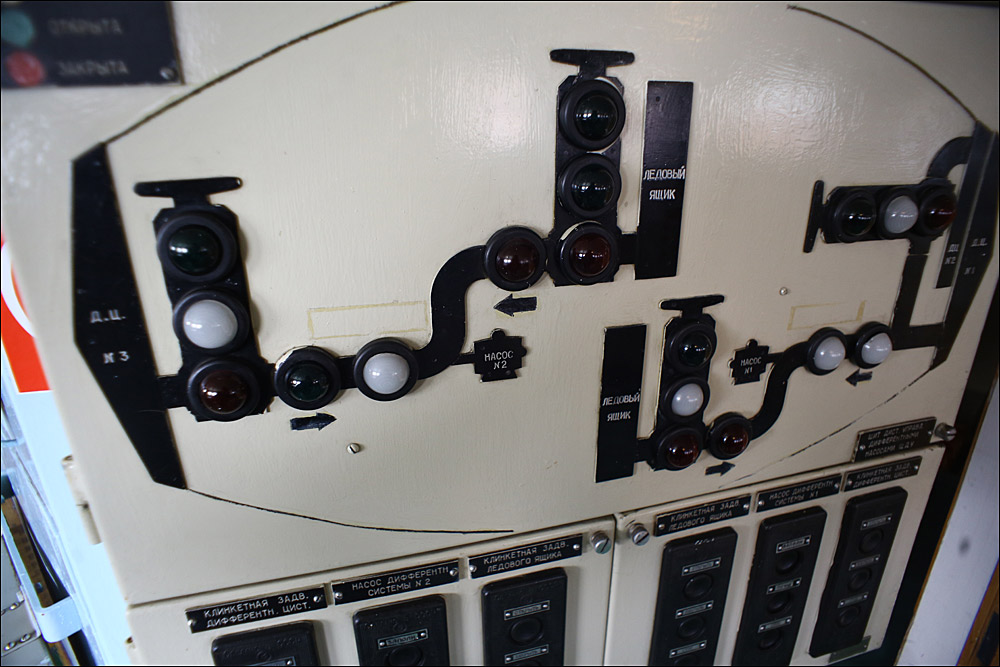
The icebreaker is equipped with hundreds of posts of the internal telephone network:
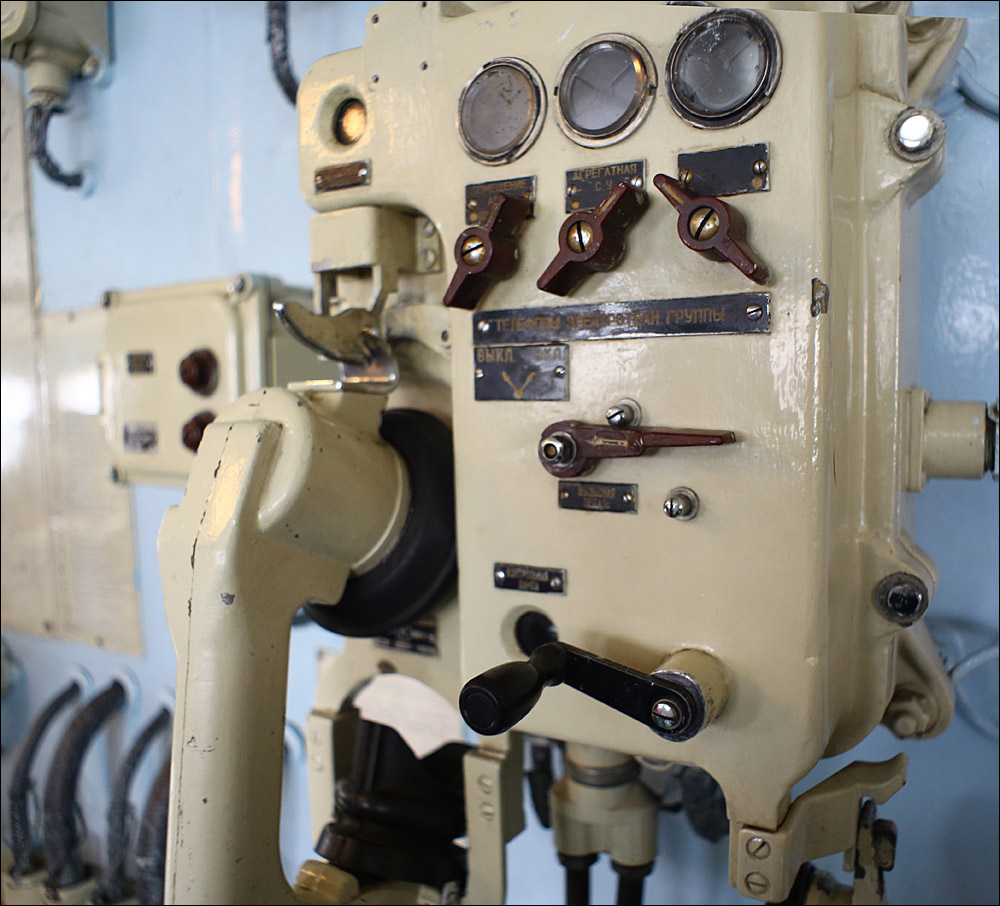
If you are interested in finding out how it all happened before nuclear-powered ships, visit the Russian Arctic Museum in St. Petersburg, there are amazing layouts for which everything is immediately clear.

This is a fragment of the exposition that struck me with its elegance a device for melting snow. Nearby there is a model of the Arctic station and many more interesting pieces.
Oh yes! Serious calculations of optimal maneuvers were made for nuclear-powered ships: the captain and the officers knew not only ice physics, but also taught serious applied mathematics of the processes.
Change setting operation
In the course of operation, many practical things were found out. And if, for example, the color of paint was important as an experience, but it didn’t have a very strong influence on history - they just started painting artifical red instead of dark colors then it wasn’t all that energetic.
One of the most interesting things that happened to “Lenin” is how the bottom was blown up in order to flood reactor units. In short, the story is as follows: at some point, it became clear that the mounted nuclear systems were not made in the most optimal way. Yes, according to the knowledge of about 55-57, everything was perfect. But it was the first nuclear surface ship, and in the course of operation, it became clear that something could be done better. In 1965, the first serious accident occurred, requiring the unloading of fuel and its burial at a depth in a special container.
The second accident occurred in just two years (even less). In the autumn of the 67th year, it was decided to unload the equipment by 3,700 tons. This is a block of 22.5 x 13 x 12 meters, that is, a fragment of a seven-story building in the center of the building. The icebreaker took the place of the burial site of the reactor compartment, then it was prepared for unloading - they poured everything they could to protect the ocean floor from radiation, cut what they could, laid shaped charges, put up special bulkheads so that the compartment would not jam with a warp after the explosion. And then an explosion pulled out the middle of the hull and "caught" on the pontoon. She was towed slightly to the side, and she calculatedly sank. The icebreaker with the flooded compartment was towed to the dock to restore the hull. Then, later, it was once again put in the dock, but already in Severodvinsk - for the installation of new OK-900 reactors, taking into account all the accumulated operating experience.
Here is the "pencil" scheme of the process.
And here there is a citation of log entries:
“22.15. The water level in the central compartment reached 9.0 meters. Bow and stern clinkers are closed, filling the compartment with seawater is discontinued.
22.22. Captain declared 5-minute readiness.
22.27. An explosion occurred. The compartment went into the water. Emergency parties began to inspect their posts "
Now
Now Lenin is a museum. They wanted to write him off, but then they realized that it was from the USSR, but still a symbol. They removed everything that was not related to the museum program and put it in the port of Murmansk. It has a crew and captain. They allow excursions several times a day, though not in all compartments. As they said on the spot, a helicopter mockup is planned from above (sort of looking for a decommissioned helicopter to put it on the platform), and now they have also dismantled some of the crew cabins and made an interactive exhibition (in particular, about how polar bears open condensed milk cans, dropped from the icebreaker by tourists). If you are in those places - be sure to look. The icebreaker is not even impressive because of its interestingness, as much as what strong things we did already in the 60s.
Of the 150 flights to the North Pole, our fleet made 114 (for autumn 2017, the first flight was a little more than 40 years ago). Now you can take a ticket and walk for about 80 hours to the North Pole on another nuclear-powered "50 Years of Victory" (10-11 days, the whole expedition). This pleasure costs about 30-40 thousand dollars, and, according to unverified data, the tickets for the next year are already almost completely bought out by Chinese tourists.
But it seems to me that this is still the dream of every kid born in the USSR. How to fly into space.
Source: https://habr.com/ru/post/343314/
All Articles